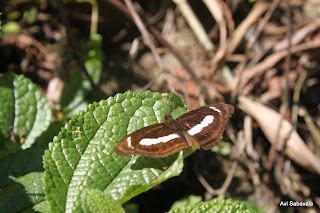Arunachal Pradesh has really smitten me in 2012. Within 6
months of my Eaglenest trip, I am again back in this beautiful region in North-Eastern
India. From the North-Western tip of Arunachal bordering Bhutan in April for hardcore birding, this time it is
post monsoon to the south-eastern tip for hardcore insect watching. Despite the
long travel, rigours and quite a bit of roughing out, this is one area that
really gets me excited. The North-Eastern Himalayan region is one of the two
Bio-diversity hotspots in India, the other being the Western Ghats.
It boasts of an amazing array of beautiful flora and fauna, a good number of
which is endemic. Post monsoon is not a great time to see birds, but another
very interesting activity beckons nature lovers – that is the insect watch.
Never mind if this gets thrown in with leeches. We are duly informed that there
are 4 different species of leeches – some bio-diversity indeed!
This blog will introduce you to the beautiful insect life of
the area. The sections are Butterflies, Moths (yes they are beauties too),
other interesting & equally beautiful creepy- crawlies and
finally some breathtaking scenes, flora and of course we humans. My Macro lens has been put
to full use. Yes it is macro photography throughout the trip. In many cases
scientific names have been used; but do not be overwhelmed by them. This blog is in 2 pages. To go to the next
page, please take your cursor on the right side of “Home” at the bottom of each
page and click on “Older Posts.”
Come join me as I recapture the wonderful memories of my
forays into this enchanting and totally different world & enjoy the cyber - ride!
















































































